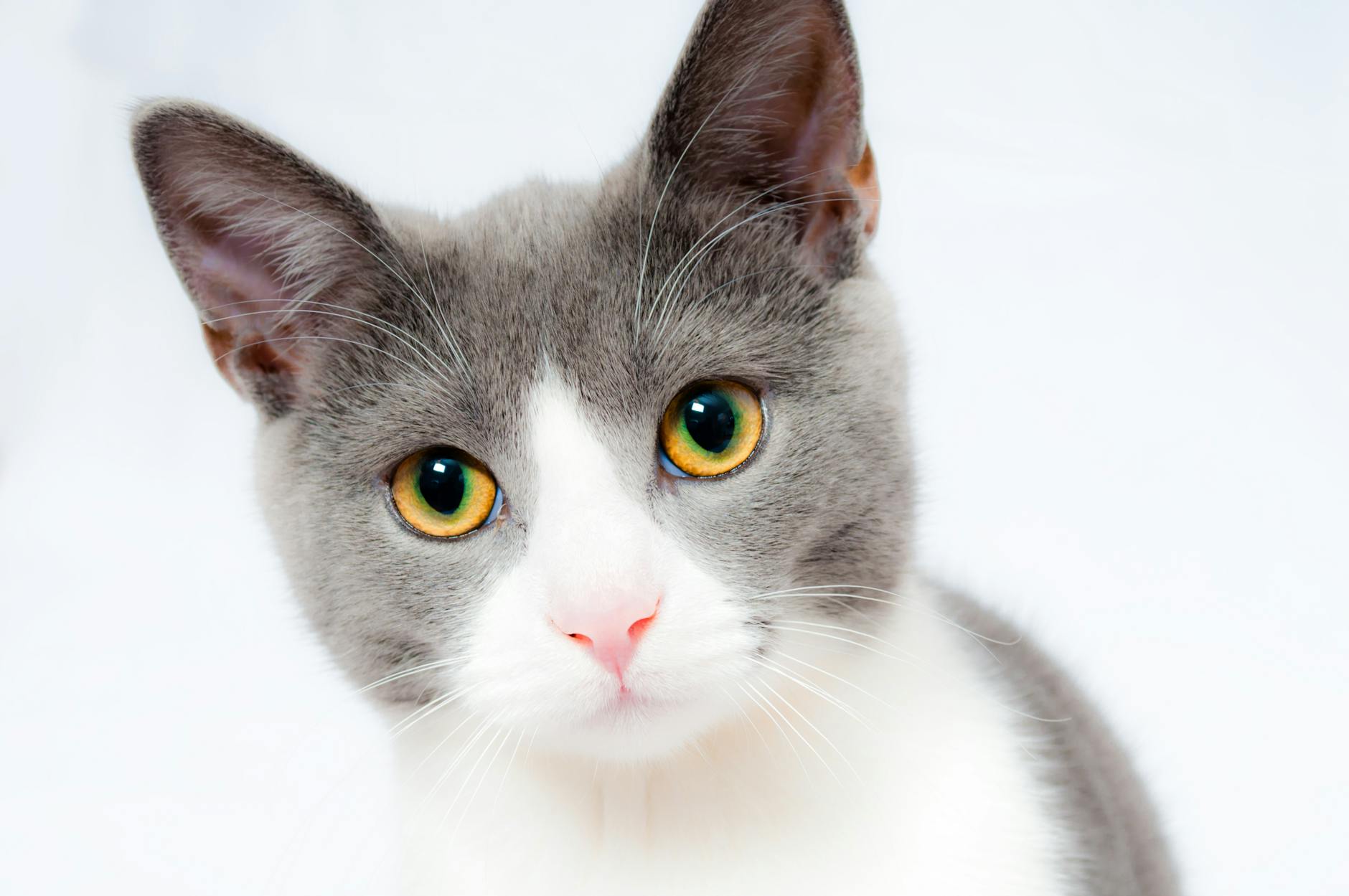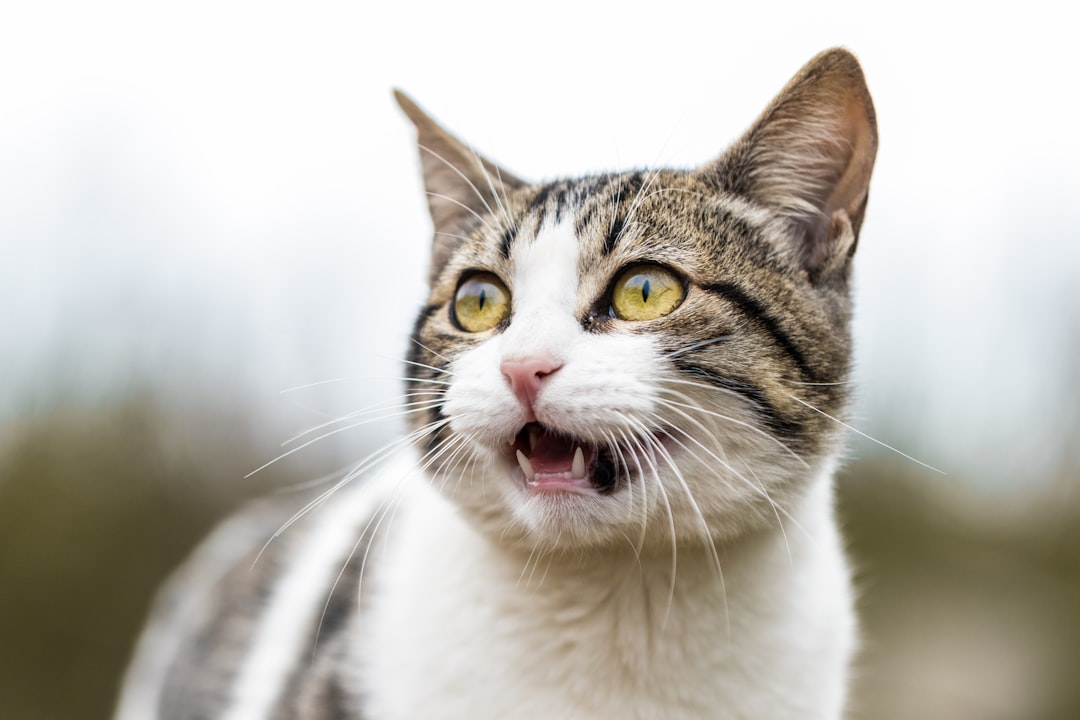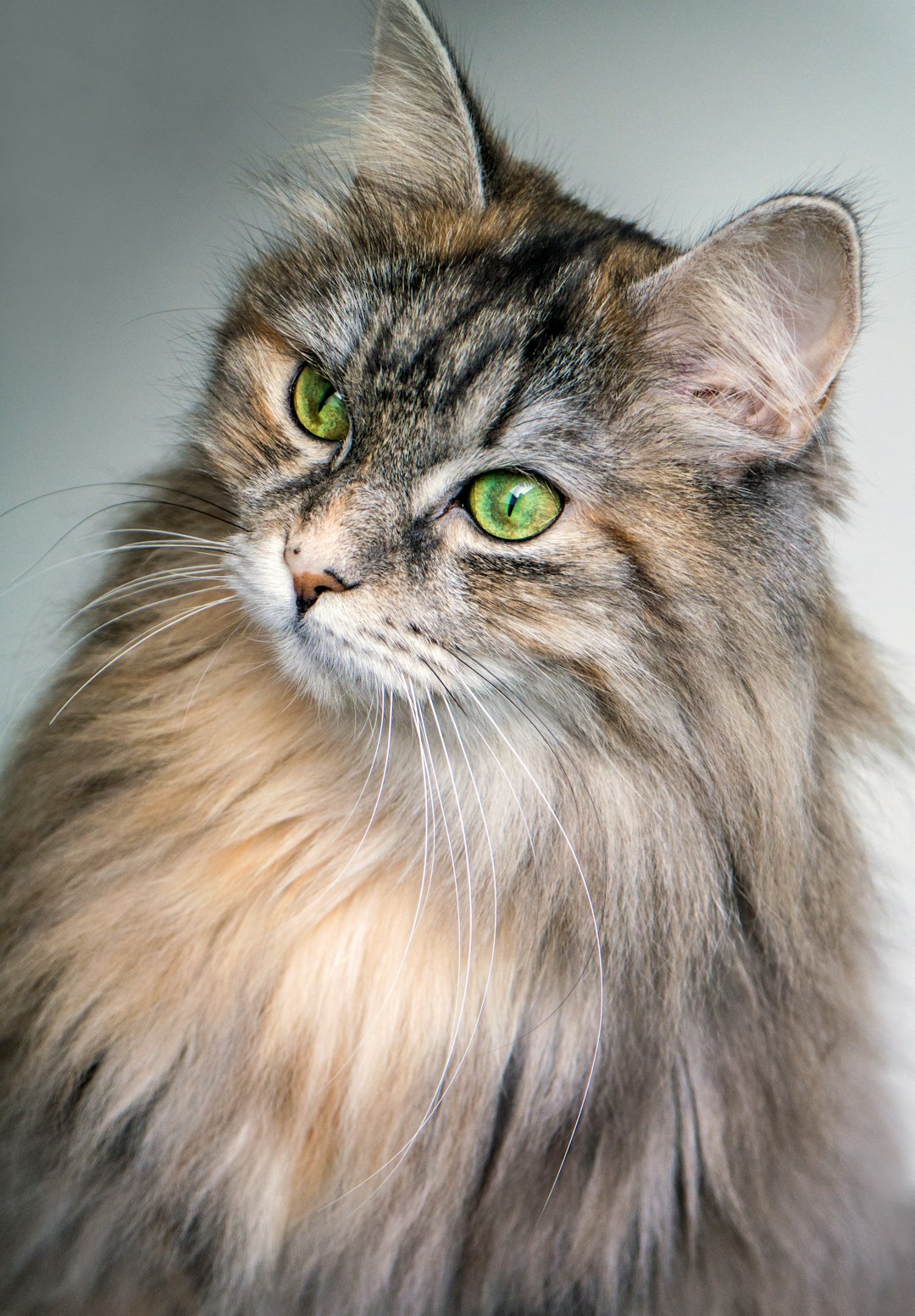Choosing the right food for your feline companion is crucial for their health and well-being. With so many options available, pet owners might feel overwhelmed when trying to determine the best fit for their cats. In this comprehensive guide, we will explore essential aspects of cat nutrition, highlighting key ingredients to seek out while debunking common myths that could mislead you. Moreover, we will discuss the different types of cat food, how to read labels effectively, and even how to address special dietary needs. By the end of this post, you’ll not only have a clearer understanding of how to care for your cat’s nutritional requirements but also feel confident in making informed choices that promote a happy, healthy life for your beloved pet.
Understanding Cat Nutrition
Understanding the intricacies of cat nutrition is essential for any pet owner aiming to enhance their feline companions’ health and well-being. Cats are unique creatures with specific dietary requirements, primarily due to their status as obligate carnivores. This means that their bodies are specifically adapted to a diet high in animal proteins and fats. Here’s a detailed overview of what constitutes a well-balanced diet for cats.
Key Nutritional Elements
To ensure your cats are getting the best possible nutrition, certain key components should be considered:
Proteins:
- Sources: Animal tissues, such as chicken, beef, or fish.
- Importance: Proteins provide essential amino acids like taurine, which is vital for heart health, vision, and reproductive function.
- Recommended Intake: Approximately 30-50% of their diet should come from protein.
Fats:
- Sources: Animal fats and oils (e.g., fish oil, chicken fat).
- Importance: Fats are a concentrated energy source and aid in nutrient absorption. Omega-3 and Omega-6 fatty acids support skin and coat health.
- Recommended Intake: About 20-40% of their diet should be comprised of fats.
Carbohydrates:
- Sources: Grains, vegetables, and fruits (though cats have a low requirement for carbs).
- Importance: While not essential, carbohydrates can provide energy and aid in digestion.
- Recommended Intake: Less than 10-15% of their diet is usually adequate.
Vitamins and Minerals:
- Sources: Meat and fish, along with added supplements in cat food.
- Importance: Vital for bone health (calcium, phosphorus), immune function (zinc, selenium), and overall cellular processes (vitamins A, D, E, and K).
- Recommended Intake: Specific needs may vary based on a cat’s age, health, and activity level.
Life Stages and Nutritional Needs
Cats have distinct dietary needs at different life stages, which can be categorized into:
Kittens (0-12 months):
- Require nutrient-rich food with high protein and fat content to support rapid growth.
- Look for specially formulated kitten food.
Adults (1-7 years):
- Balanced diet focusing on maintaining healthy weight and muscle mass.
- Transitioning to adult cat food is essential when they reach one year.
Seniors (7+ years):
- Need lower-calorie options to prevent obesity and should incorporate joint-supporting ingredients.
- Consider senior-formulated cat foods with lower protein levels for easier kidney management.
Understanding Daily Caloric Needs
The daily caloric intake for cats varies based on several factors, including age, weight, activity level, and health status. Here’s a simplified table to give you an idea of how to calculate the average daily calorie requirement:
| Cat Weight (lbs) | Weight Maintenance Calories |
|---|---|
| 5 | 180 |
| 10 | 250 |
| 15 | 350 |
| 20 | 450 |
Additional Considerations
- Hydration: Cats may not drink enough water daily, so incorporating wet food can assist in hydration.
- Food Sensitivities: Some cats might develop allergies or sensitivities. Symptoms may include itching, digestive disturbances, or skin issues. Consult your veterinarian for advice on specific dietary plans if you suspect this.
Conclusion
Understanding the fundamentals of cat nutrition equips pet owners to make informed choices about what to feed their feline companions. This knowledge not only enhances their health and longevity but also ensures they live happy and active lives. Transitioning to high-quality options with the right balance of proteins, fats, carbohydrates, vitamins, and minerals is vital for fostering optimal cat health.
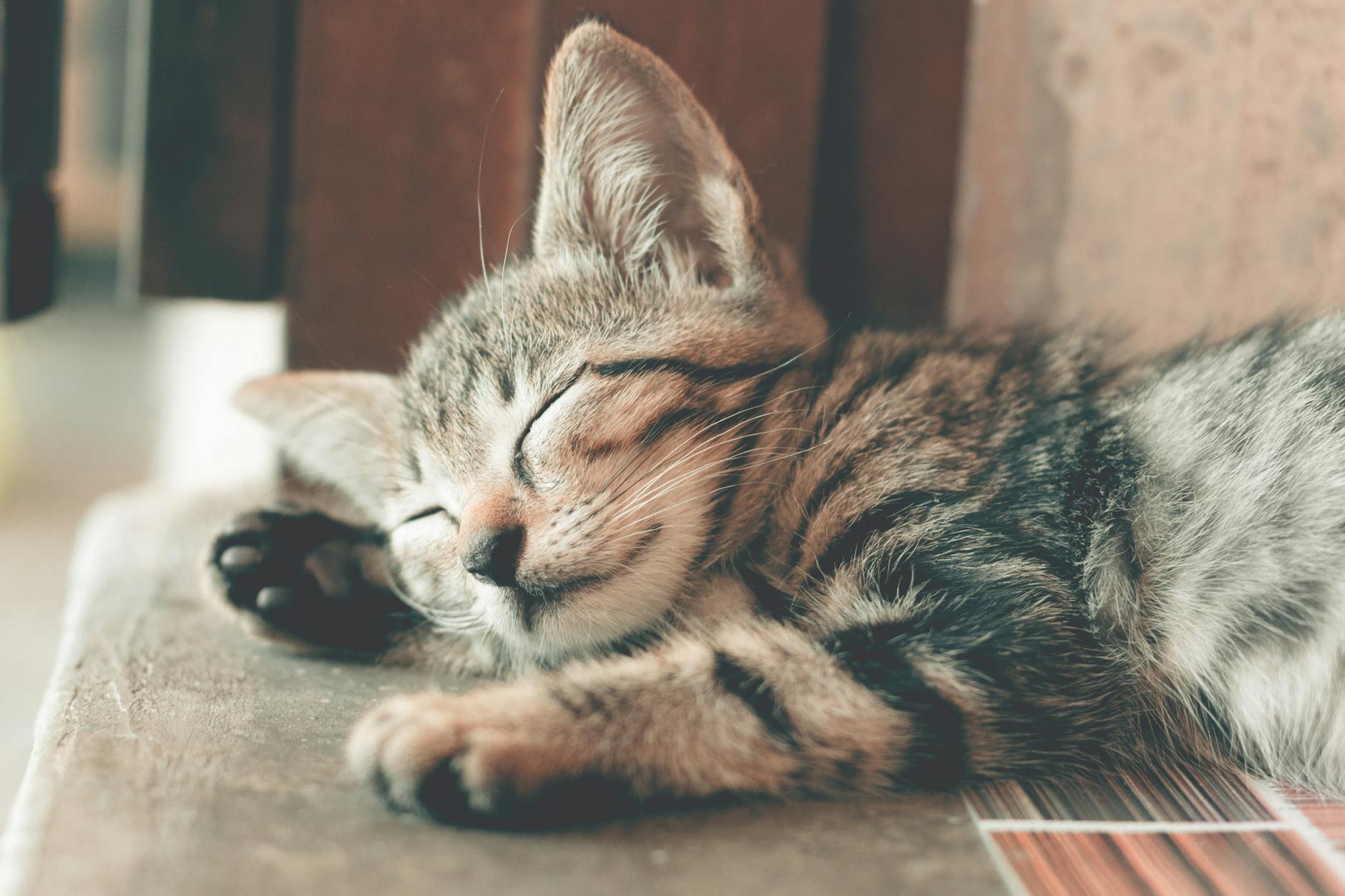
Key Ingredients to Look For
When selecting the right cat food for your feline companion, understanding the key ingredients becomes crucial for ensuring their dietary needs are met. Cats are obligate carnivores, which means their nutritional requirements are distinctly different from those of omnivores. Here are some essential ingredients that you should consider when evaluating cat food options:
1. High-Quality Protein Sources
At the heart of any cat’s diet lies protein, integral for muscle formation and overall health. Look for specific named meat sources rather than generic terms. Ideal options include:
- Chicken
- Turkey
- Fish (such as salmon or tuna)
- Lamb
This ensures a higher content of essential amino acids, particularly taurine, which is vital for cats.
2. Healthy Fats
Fats are essential for energy, skin health, and absorption of fat-soluble vitamins. Look for:
- Animal fats (like chicken fat)
- Fish oil (rich in Omega-3 and Omega-6 fatty acids)
These sources provide both energy and essential nutrients that contribute to a shiny coat and healthy skin.
3. Quality Carbohydrates
Even though cats do not require carbohydrates as primary energy sources, the inclusion of wholesome carbs can support digestion and provide extra energy. Opt for:
- Brown rice
- Sweet potatoes
- Peas
These ingredients should be limited in content, maintaining the focus on protein-rich diets.
4. Vitamins and Minerals
Incorporating a blend of vitamins and minerals is essential for the overall immunity and health of cats. Aim for:
- Taurine (for heart and vision health)
- Vitamin E and Vitamin A (for skin and coat)
- Calcium and Phosphorus (for strong bones)
5. Probiotics and Prebiotics
To promote digestive health, consider cat foods enriched with probiotics and prebiotics:
- Probiotics help maintain a healthy gut flora.
- Prebiotics enhance the growth of beneficial bacteria.
6. Avoid Artificial Additives
Steer clear of cat food with artificial colors, flavors, or preservatives. Look for:
- Natural preservatives (like mixed tocopherols)
- No fillers (such as corn, soy, or wheat)
Summary Table of Key Ingredients
| Ingredient Type | Examples | Benefits |
|---|---|---|
| High-Quality Protein | Chicken, Fish, Lamb | Muscle development, energy, essential amino acids |
| Healthy Fats | Fish Oil, Chicken Fat | Energy, skin health, nutrient absorption |
| Quality Carbohydrates | Brown Rice, Sweet Potatoes, Peas | Support digestion, additional energy |
| Vitamins and Minerals | Taurine, Vitamin E, Calcium | Immunity boost, skin/coat health, strong bones |
| Probiotics and Prebiotics | Specific strains like Lactobacillus | Support digestive health and gut flora balance |
| Avoid Artificial Additives | None (look for natural alternatives) | Reduces risk of harmful side effects and allergies |
Additional Considerations
- Allergies and Sensitivities: Some cats may have specific sensitivities to certain ingredients. Consider discussing with a veterinarian or opting for hypoallergenic recipes if necessary.
- Life Stage: Always choose ingredients suitable for your cat’s life stage—kitten, adult, or senior—as their nutritional requirements differ significantly over their lifespan.
By scrutinizing the ingredients in cat food, you ensure that your beloved pet receives a balanced diet packed with nutrition. As a conscientious pet owner, incorporating these considerations will help you make informed choices that promote optimal health and well-being for your feline friend.
Types of Cat Food: Dry, Wet, and Raw
When it comes to feline nutrition, selecting the right type of food is crucial for your cat’s health and well-being. The primary types of food available in the market are dry, wet, and raw. Each has its unique benefits and drawbacks, making it essential for pet owners to choose according to their pets’ specific health needs, preferences, and lifestyles.
Dry Cat Food
Dry food, also known as kibble, is a popular choice for many cat owners due to its convenience. Here are some advantages and disadvantages:
Advantages:
- Cost-Effective: Generally, dry food is less expensive per serving compared to wet or raw options.
- Convenience: Dry food can be left out without spoiling, making it easy to manage feeding schedules.
- Dental Health: Some kibble formulas may help reduce plaque build-up, promoting better oral hygiene.
Disadvantages:
- Lower Moisture Content: Cats naturally have a low thirst drive, so a diet that lacks moisture could lead to urinary issues.
- Potential for Overeating: Because dry food is calorie-dense, it may contribute to obesity if not portion-controlled.
Wet Cat Food
Wet food, typically sold in cans or pouches, offers higher moisture content and is often more palatable for cats. Let’s explore its pros and cons:
Advantages:
- High Moisture Content: Wet food contains around 75% water, which helps keep cats hydrated—a key factor in preventing urinary tract problems.
- Flavor and Appeal: Many cats find wet food more appetizing, making it ideal for picky eaters.
- Easier for Older Cats: Older or dental-compromised cats may find wet food easier to chew and digest.
Disadvantages:
- Potentially More Expensive: Wet food generally costs more than dry food in terms of feeding a cat daily.
- Shorter Shelf Life: Once opened, wet food must be refrigerated and consumed within a few days to prevent spoilage.
Raw Cat Food
Raw feeding has become increasingly popular among pet owners who advocate for a natural diet that mimics what cats would eat in the wild. Here are some considerations:
Advantages:
- Nutrient Rich: Raw options typically provide a balance of proteins, fats, and essential nutrients found in whole prey.
- Digestion: Many cats thrive on raw diets and display improved digestion, weight management, and coat quality.
- No Fillers or Artificial Additives: Raw diets doesn’t usually contain grains or fillers, which can be beneficial for cats with specific allergies.
Disadvantages:
- Preparation and Handling: Raw feeding requires careful handling to avoid bacterial contamination and must be freshly prepared or frozen to ensure safety.
- Nutritional Balance: Ensuring a complete and balanced diet can be challenging without expert knowledge and guidance, often necessitating consultation with a veterinarian.
Comparison Table
| Cat Food Type | Moisture Content | Cost | Shelf Life | Dental Health | Picky Eaters |
|---|---|---|---|---|---|
| Dry | Low | Low | Long (unopened) | May help | Moderate |
| Wet | High | Medium-High | Short (opened) | None | High |
| Raw | Varies | High | Varies (depends on prep) | None | Varies |
In making a choice between dry, wet, and raw, it’s essential to consider your cat’s preferences, health concerns, and your budget. “The best cat food is one that your cat enjoys, meets their nutritional needs, and aligns with your lifestyle.” By weighing the pros and cons effectively, you can create a balanced diet tailored to your beloved feline companion. Remember, transitioning between these types may require a gradual approach to avoid digestive upsets.
Reading Cat Food Labels: What to Know
Navigating through the myriad of options available in the cat food aisle can be overwhelming, especially for those who want to ensure their feline companions receive the best possible nutrition. Understanding how to read cat food labels is crucial for making informed decisions about pet nutrition. Below are key areas to focus on while examining these labels.
1. Ingredient List
A well-informed pet owner knows the significance of ingredients in cat food. The ingredient list appears on packaging from highest to lowest quantity. Here are the key components to pay attention to:
Meat Sources: Look for specific meat names like "chicken," "turkey," or "salmon" as the first ingredient. Avoid generic terms like "meat by-products" or "animal meal".
Whole Grains vs. Grain-Free: Depending on your cat’s needs, you may want to choose either whole grains like brown rice or avoid them entirely for a grain-free option.
Fruits and Vegetables: These are beneficial for vitamins and antioxidants. Ingredients like blueberries, spinach, or carrots can be favorable.
2. Guaranteed Analysis
This section provides insight into the nutritional content of the cat food, usually expressed as crude percentages. It’s typically divided into the following components:
| Nutritional Component | Percentage Range | Importance |
|---|---|---|
| Crude Protein | 30% – 45% | Supports muscle growth and overall health |
| Crude Fat | 15% – 25% | Essential for energy and nutrient absorption |
| Crude Fiber | 2% – 5% | Aids digestion and promotes gut health |
| Moisture Content | 75% (Wet Food) | Impacts hydration and urinary health |
Note: While higher percentages can indicate better quality, it is essential to cross-reference them with your cat’s specific dietary needs and health considerations.
3. Nutritional Additives
This part lists the vitamins and minerals included in the food. Important elements to search for are:
Taurine: An essential amino acid critical for heart and eye health. It should be highlighted on the label.
Omega Fatty Acids: Look for sources of omega-3 and omega-6 fatty acids, essential for skin and coat health.
Vitamins and Minerals: B vitamins, vitamin E, zinc, and iron are fundamental for a cat’s overall well-being.
4. AAFCO Statement
The Association of American Feed Control Officials (AAFCO) provides guidelines regarding the nutritional adequacy of pet food. Look for a statement confirming that:
The food is formulated to meet AAFCO standards for a specific life stage (kitten, adult, senior).
The food has been tested in feeding trials. This indicates a higher level of confidence in its safety and effectiveness.
5. Best Before Date
Check the package for a clear expiration or best before date. This ensures the food is fresh when fed to your cat.
6. Avoiding Red Flags
Be wary of certain marketing terms and discrepancies that can mislead consumers, such as:
"Natural" or "Organic": These labels are not regulated for pet foods and might not guarantee quality.
By-products or Fillers: Terms such as "corn gluten" or "meat by-products" can indicate lesser-quality ingredients.
By taking the time to understand and analyze cat food labels, pet owners can ensure they provide a balanced diet. This not only promotes the health and happiness of their feline friends but also enhances the overall experience of pet ownership. Knowing what to look for can lead to more informed choices and ultimately happier, healthier cats.
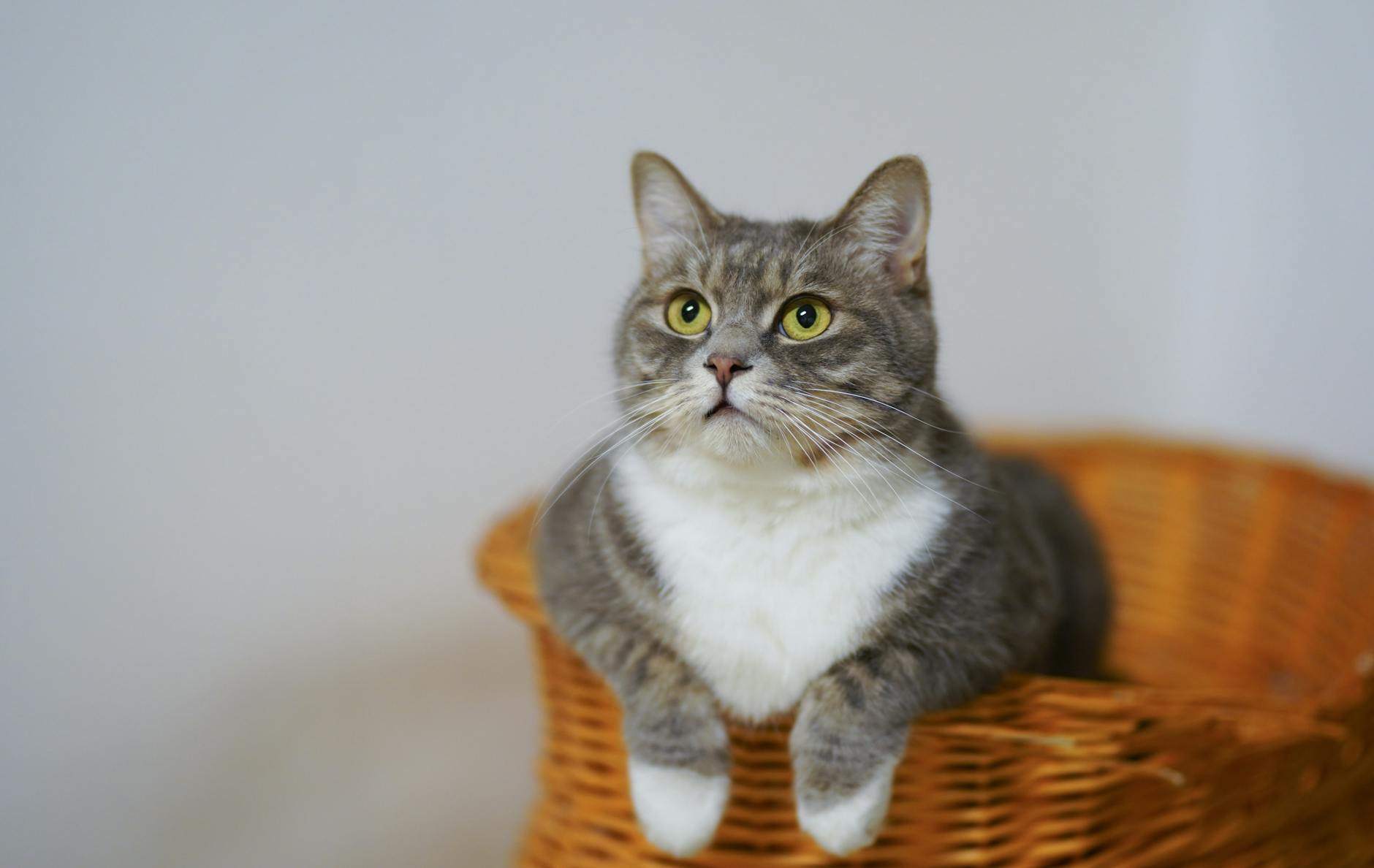
Common Cat Food Myths Debunked
Navigating the realm of cat nutrition can be quite challenging, especially with the plethora of information available. As a responsible pet owner, it’s essential to discern fact from fiction concerning dietary needs. This section will debunk some of the most common myths surrounding cat food, helping you make informed decisions for your feline companion.
Myth 1: Cats Are Obligate Carnivores and Can Only Eat Meat
While it’s fundamentally true that cats are classified as obligate carnivores, this doesn’t mean they cannot benefit from a varied diet. In the wild, cats consume not just prey meat but also the organs and even the stomach contents that contain plant material. A well-rounded cat diet can include:
- Animal Protein: Vital for energy and muscle development.
- Fat: Important for skin and coat health.
- Carbohydrates: A source of energy; while not essential, they can provide fiber and other nutrients.
Myth 2: All Grain-Free Diets Are Better for Cats
Grain-free diets have gained traction in recent years, promoting the idea that grains are unhealthy for felines. However, the reality is more nuanced. Some cats can digest grains just fine, and many high-quality food formulations include grains that provide necessary vitamins and minerals. Consider:
- Quality of Ingredients: Focus on the overall nutrient profile rather than just whether it contains grains.
- Specific Health Needs: Consult with a veterinarian regarding any specific dietary restrictions.
Myth 3: Cats Don’t Need Water If They Eat Wet Food
It is a common overlook that cats can obtain sufficient moisture from wet foods. While wet food does contain more water than dry alternatives, it’s not a replacement for fresh, clean drinking water. Key points for hydration include:
- Hydration Benefits: Water aids in digestion and maintaining kidney health.
- Varied Wet Food Types: Even with a high wet food intake, always ensure water is accessible.
Myth 4: It’s Okay to Feed Cats Leftovers from the Table
Many pet owners may be tempted to share their meals with their feline friends, thinking it’s a treat. However, this practice can lead to various health issues. Things to remember:
- Toxic Foods: Some human foods, such as onions, garlic, chocolate, and grapes, are deadly to cats.
- Unbalanced Diet: Human leftovers often lack the necessary nutrients that a cat requires.
Myth 5: Cats Will Stop Eating When They’re Full
Unlike dogs, cats do not have the same natural inclination to self-regulate their food intake. This means they may overeat or eat out of boredom, leading to obesity. Consider employing:
- Scheduled Feeding: Regular mealtimes can help manage dietary habits.
- Controlled Portions: Measure out food to maintain a healthy weight.
Summary of Common Cat Food Myths:
| Myth | Truth |
|---|---|
| Cats can only eat meat. | Cats need a balanced diet that can include a variety of nutrients. |
| Grain-free diets are superior for all cats. | Not all cats require grain-free diets; quality matters more than the absence of grains. |
| Wet food eliminates the need for water. | Cats still need access to fresh water for optimal health. |
| Table scraps are safe for cats. | Many human foods can be toxic and should be avoided. |
| Cats know when they are full. | Cats may overeat; monitoring their food intake is important. |
By understanding and debunking these common myths, pet owners can better navigate their feline’s nutritional needs and provide a diet that promotes overall health and well-being. The knowledge you gain from separating fact from fiction will empower you to keep your feline friend happy and healthy for years to come.
Special Dietary Needs for Cats
Cats are obligate carnivores, meaning they require a diet primarily made up of animal proteins. However, several factors can influence the specific dietary needs of a cat. Age, health conditions, activity levels, and life stages all play significant roles in determining the best nutritional requirements. Understanding these needs is crucial for ensuring optimal health and well-being.
Age and Life Stages
As cats age, their nutritional requirements evolve significantly. Here’s a concise breakdown of the dietary needs at various life stages:
Kittens (0-12 months):
- High protein content to support rapid growth and development.
- Increased fat and calorie levels to fuel their high energy needs.
- Specialized kitten formulas often have additional nutrients like DHA (docosahexaenoic acid) for brain development.
Adult Cats (1-7 years):
- A balanced diet containing adequate protein (around 30-40% of total calories).
- Important vitamins and minerals for maintaining overall health and preventing obesity.
- A focus on high-quality protein sources to sustain muscle mass.
Senior Cats (7+ years):
- Reduced calories to prevent obesity while still maintaining essential nutrient intake.
- Increased fiber to aid digestive health.
- Antioxidants and supplements (like joint support ingredients) to combat age-related health issues.
Health Conditions
Certain health issues can necessitate a tailor-made dietary approach. Here are some common conditions and their dietary implications:
Kidney Disease:
- A diet lower in protein and phosphorus can alleviate strain on the kidneys.
- Increased moisture content is beneficial; wet formulations are highly recommended.
Diabetes:
- Low carbohydrate and high protein diets help manage blood glucose levels.
- Consistency in feeding regularly spaced meals is crucial.
Obesity:
- Focus on weight-control formulas that offer reduced calories while maintaining nutritional balance.
- Enhanced fiber content aids in promoting satiety.
Food Allergies or Sensitivities:
- Novel protein sources (like duck, venison, or rabbit) or hypoallergenic formulations can help.
- Grain-free options may also benefit those sensitive to common fillers.
Special Considerations for Cats on Unique Diets
When catering to felines with special dietary needs, consider the following:
Hydration:
- For those on dry diets, ensure a source of fresh water is always available.
- Incorporating wet varieties can help maintain hydration levels.
Palatability:
- Cats are finicky eaters, so introducing flavored options or enticing textures may encourage them to eat when they have reduced appetite due to health issues.
Homemade vs. Commercial Diets:
- Consult with a veterinarian when considering homemade diets to ensure all nutritional requirements are met.
- Certain commercial brands offer veterinary-prescribed options tailored to specific health conditions.
Nutritional Supplements and Additives
Some cats may benefit from nutritional supplements to support their health. Here are examples:
- Omega-3 fatty acids: May assist with skin health and anti-inflammatory support.
- Probiotics: Help promote digestive health and bolster the immune system.
- Joint supplements (like glucosamine): Can be beneficial for senior cats or those with joint disorders.
When considering the special dietary needs of a cat, it’s essential to prioritize their unique health circumstances and consult a veterinarian to develop a well-rounded nutritional plan tailored to their specific requirements. This personalized approach not only helps in managing specific conditions but also promotes longevity and improved quality of life.
How to Transition Between Cat Foods
Transitioning between cat foods is a task that requires patience and careful planning. Whether you’re switching from one brand to another, changing from dry to wet food, or introducing a new recipe for dietary needs, a proper transition is crucial to ensure your feline’s health and comfort. Sudden changes in diet can lead to digestive upset, including vomiting or diarrhea. Therefore, following a structured plan can help minimize potential issues. Here’s how to execute an effective food transition:
The Gradual Transition Method
A gradual approach is highly recommended when changing your cat’s food. This method allows their digestive system to adjust to the new ingredients without shocking their system. Here’s a breakdown of how to implement this transition smoothly:
Duration: Aim for at least 7 to 10 days for the transition process. Cats may need longer to adjust if they’re particularly sensitive to dietary changes.
Initial Phase:
- Start with a 75% portion of the existing food and 25% of the new food for the first couple of days. This helps introduce the new diet gradually.
Middle Phase:
- After 2-3 days, adjust the mixture to 50% old food and 50% new food. Observe your cat for any signs of discomfort during this phase.
Final Phase:
- By days 5-7, move to 25% old food and 75% new food. After another couple of days, you can switch entirely to the new food if no adverse reactions occur.
Signs Your Cat Is Adjusting
As you transition, watch for these indicators to gauge your cat’s comfort with the new food:
- Normal Bowel Movements: Consistency is key; loose stools or constipation can indicate issues.
- Eating Habits: Your cat should show interest in the new food and consistently consume it.
- Overall Behavior: Maintain an eye on their energy levels and mood.
If problems arise, it might be necessary to revert back to the old food and consult with a veterinarian if digestive issues persist.
Transition Plan Template
Here’s a simple table to assist in structuring your transition plan:
| Day | Food Mixture | Notes |
|---|---|---|
| 1-2 | 75% Old / 25% New | Monitor for initial reactions |
| 3-4 | 50% Old / 50% New | Observe appetite & stool consistency |
| 5-6 | 25% Old / 75% New | Continue watching for any discomfort |
| 7+ | 100% New | Confirm your cat thrives on the new food |
Special Considerations
- Health Conditions: If your cat has specific health conditions or sensitivities, consult your veterinarian before changing diets.
- Palatability: Sometimes, a cat may reject new food. In such cases, try mixing in a little bit of low-sodium chicken broth or tuna water to entice them.
- Hydration: Ensure your cat remains hydrated during the transition, especially if you are moving towards drier formulas.
By taking a structured approach to transitioning between cat foods, you can help ensure that your feline companion remains happy, healthy, and comfortable with their new diet. Remember that each cat is unique, so maintaining flexibility and monitoring individual responses is essential to finding the best dietary fit.
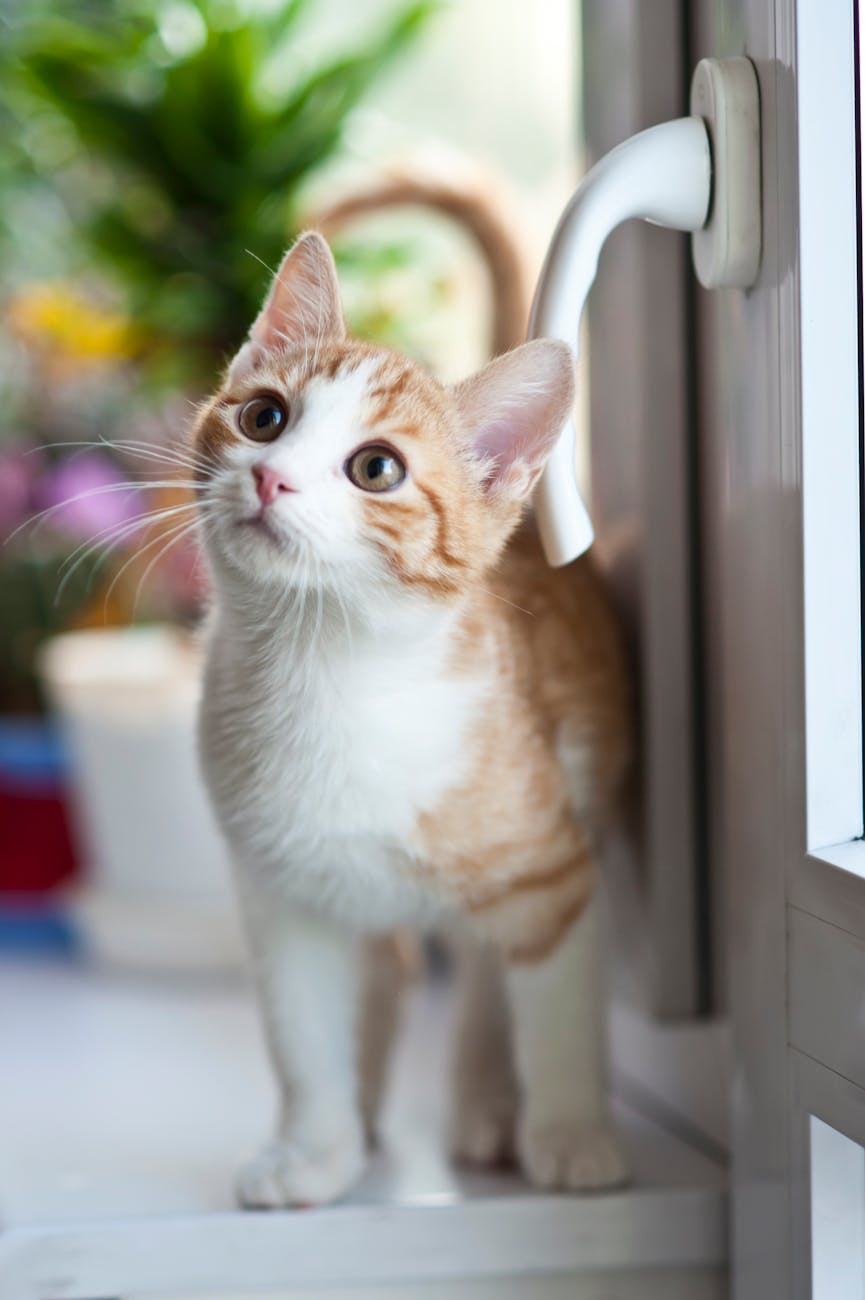
Budgeting for Quality Cat Food
When it comes to your feline friend, quality nutrition is paramount. However, prioritizing your cat’s dietary needs doesn’t necessarily mean breaking the bank. Budgeting for high-quality cat food can be a manageable task when approached thoughtfully. Here’s how to plan and allocate resources effectively while ensuring that your furry companion receives the best nourishment possible.
Understanding the Cost vs. Quality Ratio
Investing in quality cat food can significantly affect your pet’s health, but it’s essential to understand the correlation between cost and nutritional value. Generally, premium brands that use high-quality ingredients may have a higher price point but often provide better nutrition, leading to:
- Reduced veterinary bills: A balanced diet fosters better overall health.
- Less consumption of food: Nutrient-rich options may satisfy hunger more effectively, leading to smaller portion sizes.
Crafting a Cat Food Budget
To ensure you’re allocating your funds wisely, consider following these steps:
- Evaluate Your Income: Assess your monthly budget and decide how much you can reasonably devote to pet care.
- Research Brands: Look for quality brands that offer suitable options for your cat’s dietary needs. Websites and reviews often help in evaluating value for money.
- Factor In Additional Costs: Don’t forget to include other expenses associated with cat care, such as litter, toys, and veterinary visits.
Price Comparison of Different Types of Cat Food
Understanding the price differentiation among various types of cat food can help you select the best option that fits your budget. Below is a comparative table showcasing average price ranges for each type:
| Type of Cat Food | Price Range (per pound) | Advantages | Disadvantages |
|---|---|---|---|
| Dry Cat Food | $1 – $4 | Long shelf life, cost-effective | Less moisture, may require hydration |
| Wet Cat Food | $2 – $6 | High moisture, palatable | Higher cost, shorter shelf life |
| Raw Cat Food | $3 – $8 | Nutrient-dense, natural diet | Expensive, potential safety concerns |
Tips for Saving Without Compromising Quality
To manage costs while ensuring your cat receives quality nutrition, consider these strategies:
- Buy in Bulk: Purchasing larger quantities of cat food can lead to considerable savings. Just ensure that you store it properly.
- Look for Discounts: Keep an eye out for sales, coupons, and loyalty programs offered by retailers or manufacturers.
- Choose Multi-Packing Options: Many brands offer multi-pack deals that provide cost savings compared to purchasing single containers.
Monitoring Your Cat’s Health
Investing in quality food is more than just financial expenditure; it’s an investment in your pet’s health. Regularly monitor your cat’s weight, coat condition, and overall well-being to see if the food choice is suitable. If you notice any health issues, it may be essential to adjust your budget and food selection accordingly.
Engaging in Community Resources
Getting involved in online pet-ownership communities can yield invaluable advice regarding budgeting for cat food. Pet forums often share:
- Tips on choosing budget-friendly brands
- Discounts and promotions
- Where to purchase products at lower prices
By taking the time to budget effectively for quality cat food, you can ensure that your beloved feline enjoys not only a nutritious diet but also the health benefits that come from it without straining your finances. Engaging in proper planning can lead to a happier, healthier pet and ultimately, a more harmonious relationship.
Top Cat Food Brands Reviewed
When it comes to selecting the best nutrition options for felines, understanding the market’s broad array of cat food brands can be overwhelming. With plenty of choices available, pet owners must carefully evaluate each brand’s reputation, ingredient quality, and nutritional adequacy. Below is an in-depth review of some top-rated cat food brands known for their commitment to healthful ingredients and pet-friendly formulations.
1. Hill’s Science Diet
- Overview: Known for its scientific approach to pet nutrition, Hill’s Science Diet specializes in tailor-made formulas for various life stages and health conditions.
- Key Features:
- Contains high-quality protein sources.
- Formulated with a balanced blend of vitamins, minerals, and essential fatty acids.
- Offers specialized diets for weight management, dental health, and sensitive stomachs.
| Nutritional Value | Pros | Cons |
|---|---|---|
| High Protein Content | Veterinarians recommend it | Higher price point |
| Clear ingredient labeling | Wide variety for different needs | Limited grain-free options |
2. Royal Canin
- Overview: This brand is well-known for its breed-specific and health-focused diets that cater to the unique needs of various cat breeds and lifestyles.
- Key Features:
- Employs a range of formulations designed for particular dietary requirements.
- Includes ingredients that support digestive health and skin sensitives.
- Strong emphasis on palatability for picky eaters.
| Nutritional Value | Pros | Cons |
|---|---|---|
| Breed-focused options | Strongly endorsed by vets | Contains fillers and grains |
| Tailored formulas available | Helps with specific health issues | Some products are pricey |
3. Wellness CORE
- Overview: Known for its grain-free and protein-rich formulas, Wellness CORE is a favorite among many pet owners who prioritize high meat content in their cat’s diet.
- Key Features:
- Focuses on natural ingredients with no artificial colors or preservatives.
- Offers a robust range of recipes that include real meat, fruits, and vegetables.
- High in omega fatty acids to promote healthy skin and coat.
| Nutritional Value | Pros | Cons |
|---|---|---|
| High protein options | Grain-free options available | Some flavors may be too rich for sensitive stomachs |
| Includes probiotics | Positive reviews from cat owners | Higher price compared to competitors |
4. Purina Pro Plan
- Overview: Purina Pro Plan is a well-established and trusted brand, leveraging years of research in cat nutrition to create premium formulas.
- Key Features:
- A diverse selection of products that suit different life stages and dietary restrictions.
- Focuses on performance nutrition for active and sporting cats.
- Contains powerful antioxidants for immune health.
| Nutritional Value | Pros | Cons |
|---|---|---|
| Well-researched formulations | Outstanding variety to choose from | Some variations may contain artificial ingredients |
| Competitive pricing | Widely available in stores | Potential for allergens in certain recipes |
Quotation
"Choosing the right diet is not just about filling a bowl. It’s about nurturing your feline friend and ensuring they thrive every day."
5. Orijen
- Overview: Orijen prides itself on a philosophy of biologically appropriate foods made with fresh, regional ingredients.
- Key Features:
- High meat content with a focus on whole prey ingredients.
- No grain fillers; relies on fruits and vegetables for essential nutrients.
- Includes a variety of protein sources, aligning with a cat’s natural diet.
| Nutritional Value | Pros | Cons |
|---|---|---|
| High meat and protein levels | Exceptional ingredient quality | Premium pricing |
| Grain-free formulas | Strong reputation for health | Limited distribution |
Summary
The market for cat food is saturated, but by choosing reputable brands with high-quality ingredients, pet owners can effectively meet their furry companions’ dietary needs. By reviewing these leading brands, pet owners can make informed decisions, ensuring that their felines receive the best nourishment available. Prioritize factors such as individual health requirements, age, and personal preferences when selecting the right food for your cat.
Consulting Your Veterinarian for Advice
When it comes to making informed choices about your feline companion’s diet, consulting a veterinarian stands as one of the most prudent steps a pet owner can take. Not only do veterinarians possess a wealth of knowledge regarding pet nutrition, but they also have unique insights tailored specifically to your cat’s individual health needs. Below are several key reasons and ways to effectively engage your veterinarian when it comes to selecting the best nutrition options for your cat.
The Importance of Veterinary Input
Individual Health Assessment: Each cat has different health requirements based on age, breed, weight, and existing health issues. Your veterinarian can provide a tailored nutritional plan that addresses your cat’s specific needs.
Weight Management: Obesity is a common concern among cats, and a veterinarian can help you choose foods that promote a healthy weight while ensuring adequate nutrition.
Allergies and Food Sensitivities: Some cats may experience allergies or sensitivities to certain ingredients. A veterinarian can recommend hypoallergenic or limited-ingredient options that mitigate these issues.
Chronic Conditions: For cats with chronic illnesses such as diabetes or kidney disease, special dietary needs must be observed. Your vet will provide recommendations to support these medical conditions through diet.
Questions to Ask Your Veterinarian
When you meet with your veterinarian, having a list of questions can help optimize your discussion about your cat’s diet:
- What are the appropriate life stage-specific foods for my cat (kitten, adult, senior)?
- Are there any specific nutrients that my cat requires more of based on their health condition or lifestyle?
- What should I avoid in a cat food formula to prevent health issues?
- How do feeding schedules impact my cat’s health and well-being?
- Can you recommend any brands or formulations that you trust?
How to Prepare for Your Visit
Bring Pet Records: Take your cat’s medical history, including vaccination records and any past dietary recommendations, to inform the discussion.
List Observations: Note any changes in your cat’s behavior related to eating, such as refusing food, picky eating, or noticeable weight loss/gain.
Consider a Food Diary: Monitor your cat’s eating habits and any reactions over a week. This diary can provide valuable insights to your veterinarian.
Benefits of Regular Consultations
Keep Up With Changes: As your cat ages, their dietary needs will evolve. Regular consultations can help adjust their diet accordingly.
Early Detection: Discussing your cat’s diet frequently can help spot potential health issues early, and often, nutritional changes can make a significant difference.
Integrating Veterinary Care: Collaborate with your vet not only on food but also on other preventive care aspects, such as routine check-ups and vaccinations.
Incorporating a veterinarian’s insights into your pet’s dietary choices can be the cornerstone of maintaining their health and longevity. While there are many self-service resources available today, the expertise of a veterinary professional cannot be overstated. Ultimately, doing so establishes a robust foundation for your cat’s overall well-being while simultaneously deepening the bond between you and your feline friend.
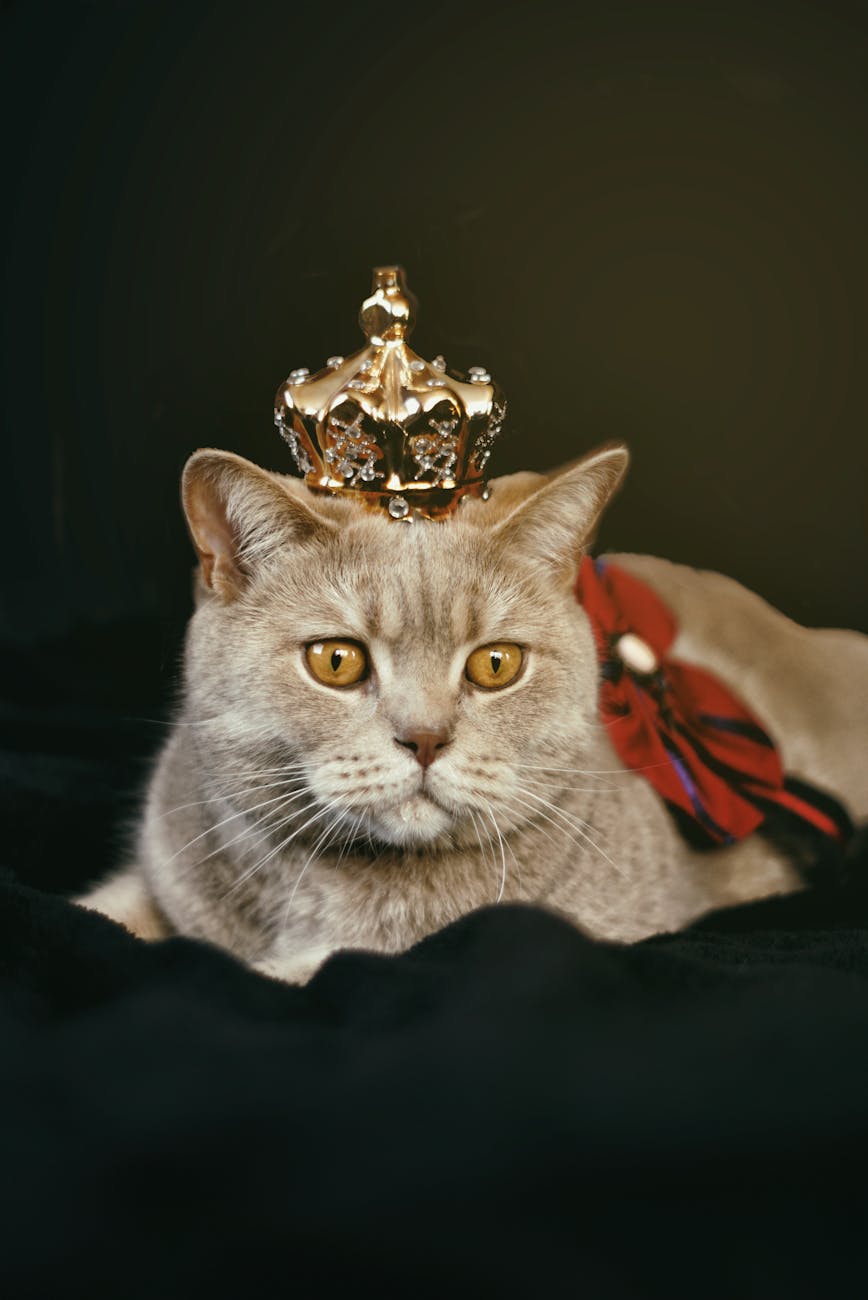
Frequently Asked Questions
What should I look for when selecting cat food?
When selecting cat food, it’s essential to consider the nutritional needs of your feline companion. Look for a high-quality source of protein, such as chicken, fish, or beef, as cats are obligate carnivores. The food should include essential nutrients like taurine, vitamins, and minerals. Additionally, check the ingredient list for harmful additives or fillers. It’s advisable to choose brands that adhere to AAFCO (Association of American Feed Control Officials) standards to ensure balanced nutrition.
Is wet food better than dry food for cats?
Both wet and dry cat food have their benefits, and the choice largely depends on your cat’s specific needs and preferences. Wet food generally has higher moisture content, which can help keep your cat hydrated and support urinary health. On the other hand, dry food is convenient, can help with dental health through its crunchy texture, and is typically more energy-dense. A combination of both can often be ideal, allowing cats to benefit from the advantages of each type.
How do I transition my cat to a new food?
Transitioning your cat to new food should be done gradually to avoid digestive issues. Start by mixing a small amount of the new food with the current food, gradually increasing the proportion of the new food over a week or so. This slow method allows your cat’s digestive system to adjust without causing upset. Monitor your cat’s reaction and appetite, and if you notice any signs of distress or refusal to eat, consult your veterinarian for advice.
What ingredients should I avoid in cat food?
When choosing cat food, avoid products that contain artificial preservatives, colors, or flavors, as these can be harmful to your cat’s health. Steer clear of foods that list corn, wheat, or soy as primary ingredients, since these are often used as fillers and do not provide essential nutrients. Additionally, be cautious of foods containing meat by-products, as they can vary in quality and may not offer the necessary protein levels for your cat.

